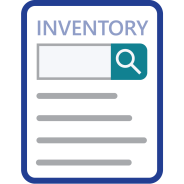
Choose from 5 options:
Australia is committed to controlling the trade of industrial chemicals that are toxic to human health and the environment. If you wish to import certain chemicals covered under the Rotterdam convention, you must apply and pay a fee.
Anyone seeking to import the following chemicals must apply and receive authorisation.
See the list of chemicals in the table below.
Section 71 and 72 of the Industrial Chemicals (General) Rules 2019 prohibits the introduction of certain industrial chemicals subject to the Rotterdam Convention without our prior authorisation. Penalties apply for non-compliance.
Note: Importers are responsible for staying informed about the status of Annex III-listed or severely restricted chemicals and any related import responses. This information is published in the PIC Circular.
| Chemical name | CAS Number |
|---|---|
| Commercial octabromodiphenyl ether (including hexabromodiphenyl ether and heptabromodiphenyl ether) | 36483-60-0, 68928-80-3 |
| Commercial pentabromodiphenyl ether (including tetrabromodiphenyl ether and pentabromodiphenyl ether) | 32534-81-9, 40088-47-9 |
| Hexabromocyclododecane (HBCD) | 25637-99-4 |
Perfluorooctane sulfonic acid, perfluorooctane sulfonates, perfluorooctane sulfonamides and perfluorooctane sulfonyls, including: (i) potassium perfluorooctane sulfonate; and (ii) lithium perfluorooctane sulfonate; and (iii) ammonium perfluorooctane sulfonate; and (iv) diethanolammonium perfluorooctane sulfonate; and (v) tetraethylammonium perfluorooctane sulfonate; and (vi) didecyldimethylammonium perfluorooctane sulfonate; and (vii) N‑ethylperfluorooctane sulfonamide; and (viii) N‑methylperfluorooctane sulfonamide; and (ix) N‑ethyl‑N‑(2‑hydroxyethyl) perfluorooctane sulfonamide; and (x) N‑(2‑hydroxyethyl)‑N‑methylperfluorooctane sulfonamide; and (xi) perfluorooctane sulfonyl fluoride | 1691-99-2, 1763-23-1, 24448-09-7, 251099-16-8, 2795-39-3, 29081-56-9, 29457-72-5, 307-35-7, 31506-32-8, 4151-50-2, 56773-42-3, 70225-14-8 |
Polybrominated Biphenyls (PBBs) including: (i) hexabromobiphenyl; and (ii) octabromobiphenyl; and (iii) decabromobiphenyl | 13654-09-6, 27858-07-7, 36355-01-8 |
| Short chain chlorinated paraffins (SCCP) | 85535-84-8 |
| *Tetraethyl lead | 78-00-2 |
| Tetramethyl lead | 75-74-1 |
| Tributyl tin compounds | 1461-22-9, 1983-10-4, 2155-70-6, 24124-25-2, 4342-36-3, 56-35-9, 85409-17-2 |
| Decabromodiphenyl ether (decaBDE) | 1163-19-5 |
| Perfluorooctanoic acid (PFOA)* | 335-67-1 |
| PFOA salts* | |
PFOA‑related compounds*, including:
|
*Tetraethyl lead - This is a highly toxic fuel additive and although it is on the Inventory, the introduction of tetraethyl lead is subject to special conditions. If you wish to import tetraethyl lead, please contact us.
You’ll need the following information:
Payments are non-refundable.
| Description | Fee (AUD) |
|---|---|
| Apply to import a Rotterdam Convention banned or severely restricted industrial chemical | Go to our fees page. |